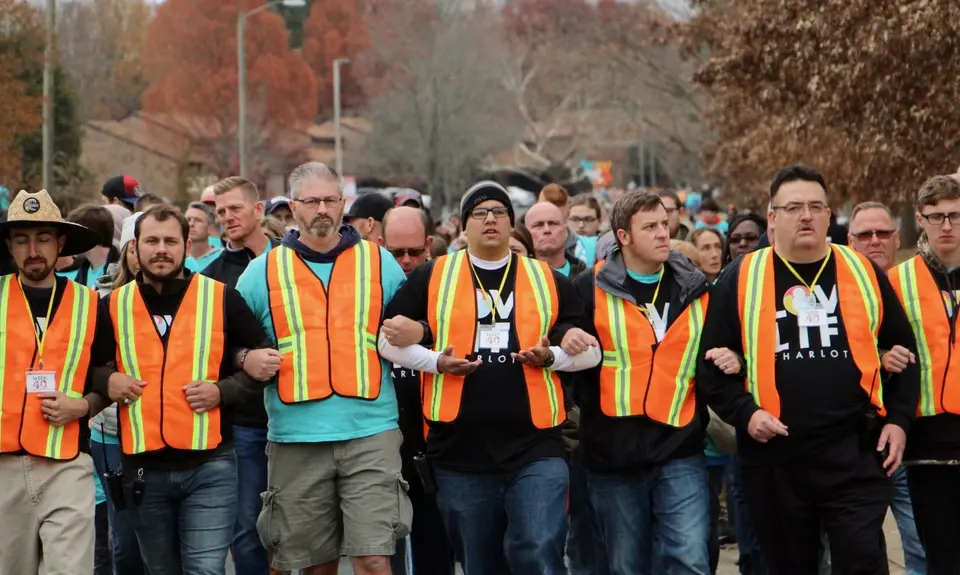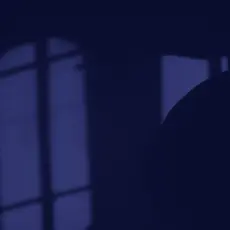When tens of thousands of abortion-rights opponents gather in Washington, D.C., this week to protest the 45th anniversary of Roe v. Wade, many will be lobbying the Trump administration and Congress on measures that they hope will chip away at and ultimately lead to the repeal of Roe. But a smaller group of activists are taking a much more direct approach to their efforts to stop legal abortion. Quietly, the anti-choice “rescue” movement has been trying out new tactics to test the limits of the FACE Act, the 1994 law that stopped them from physically blocking the entrances of abortion clinics in order to deny women access.
“Rescues” or abortion clinic sit-ins, are nothing new to the anti-abortion movement. In 1991, as many as 500 protesters a day gathered in front of abortion clinics in Wichita, Kansas, blocking patients from entering the buildings. The anti-abortion “rescue” movement was at its height then, with thousands gathering at national events to shut down clinics, while dedicated local activists focused on regular daily or weekly “rescues” that involved barricading elevators, blocking the vehicles of abortion providers, even locking themselves to buildings, cement blocks or cars so they couldn’t be removed from the premises.
The FACE Act put an end to almost all of those tactics. Signed into law in 1994 by Democratic President Bill Clinton, FACE (Freedom of Access to Clinic Entrances) made it a federal crime to physically obstruct a clinic entrance or use force, threat of force or intimidation against anyone attempting to provide or procure an abortion, or to intentionally damage or destroy the property of a reproductive health services facility. (FACE’s rules also applied to anyone trying to block access to a place of worship.)
The FACE Act brought a quick end to the rescue movement as it existed in its heyday, ending the ability of anti-choice activists to physically prevent women from accessing abortion. But the strength of the law depends on how aggressively the federal government is willing to enforce it. In the five years that the FACE Act was in effect under President Clinton, the administration used it to file charges in 46 criminal or civil cases. During the two-term presidency of Republican George W. Bush, on the other hand, the Department of Justice had a 75 percent drop in criminal FACE Act violation charges, and filed just one civil case in eight years. Aggressive enforcement began again with the election of Democratic President Barack Obama, whose administration prosecuted 11 criminal and nine civil FACE Act violations in his first term alone.
Monica Miller, Citizens for a Pro-Life Society (Photo by Robin Marty)
With another Republican president in the White House— one who anti-abortion groups worked zealously to get elected once they accepted the fact that he would be their inevitable nominee— it is still unclear how aggressively the Department of Justice will enforce the FACE Act. Last year, the Trump Justice Department showed that it was willing to prosecute the most flagrant FACE violations after the radical anti-choice group Operation Save America attempted an old-school clinic blockade in Louisville, Kentucky. Police arrested 11 anti-abortion activists associated with Operation Save America in May after they sat and directly blocked the front doors of the only abortion clinic in the state. Ten of the activists were ultimately charged with civil FACE Act violations, and a temporary restraining order was issued to keep them from the clinic property when they returned for a national event two months later. A full trial on the charges will occur this spring.
Whether the Trump administration will pursue less clear-cut cases remains to be seen. In response, anti-abortion activists appear to be nibbling around the edges of the law, trying out new strategies to test how far the Justice Department will allow them to go.
Monica Miller is no stranger to abortion clinic arrests. A close colleague of Joe Scheidler, the so-called “godfather” of the rescue movement and the head of Pro-Life Action League, one of the original groups dedicated to closing abortion clinics through rescues, pickets and provider harassment, Miller was regularly involved in clinic blockades in the Midwest from the late 1970s through the early 1990s, some of which resulted in jail time.
Today, Miller is the director of Citizens for a Pro-Life Society, an anti-abortion group in Michigan, and she’s bringing the rescue movement back to life—albeit in a slightly different way than the well-known ‘80’s version. Miller’s new approach, which she calls “Red Rose Rescue,” is based on the activism of Mary Wagner, a Canadian woman who has cumulatively spent over four and a half years in jail due to multiple arrests for trespassing at abortion clinics. Like Wagner, Miller and her fellow activists take roses bearing notes offering emotional support and phone numbers of anti-abortion crisis pregnancy centers into clinic waiting rooms, passing them out to pregnant patients until the police arrive, then refuse to leave the buildings until they are physically removed by authorities.
The Red Rose Rescues, in many ways, harken back to the early rescue movement.
Unlike Wagner, however, Miller coordinates multiple simultaneous rescues, with the trespass actions occurring at a number of sites in different cities all on the same morning. The first Red Rose Rescue was held on September 15, 2017, and took place in Albuquerque, New Mexico; Sterling Heights, Michigan and Alexandria, Virginia. A total of 12 activists at three different clinics entered the facilities and approached patients. All of the participants in Michigan and Virginia were arrested for trespassing, while the activists in New Mexico left without incident when confronted by police. Miller coordinated a second rescue event on December 2, targeting the same Alexandria clinic as well as clinics in West Bloomfield Township, Michigan and in Washington, D.C. At least 10 activists were arrested, six of them for the second time—including Miller.
The Red Rose Rescues, in many ways, harken back to the early rescue movement. Clinic invasions were a popular tactic from the start of the movement. Sit-ins were one of the types of “rescues” Scheidler promoted in his quintessential anti-abortion handbook, “Closed: 99 Ways to Stop Abortion.” Scheidler said that sit-ins had a three-fold mission in stopping abortions—the first of which was to halt the performance of abortions while the activists were in the building. But while the goal of those early clinic-invasion rescues was to stop abortions from being performed while the rescue was occurring, Red Rose rescuers allege that stopping doctors from performing abortions isn’t their primary intent at all. The roses, they claim, are one final attempt—after patients have already checked in for their appointments—to convince them not to go through with abortion. And the refusal to leave the clinic, they say, isn’t about stopping the doctors from performing the abortions, but standing in solidarity with the fetuses about to be aborted.
It’s that very subtle distinction that activists claim allows Red Rose Rescues to skirt the FACE Act in ways that traditional rescues can’t. And so far, it appears to be working. “Please note that no one has been charged with violating the Freedom of Access to Clinic Entrances Act!!” Miller wrote in a newsletter on November 6, 2017, after the initial set of rescues. “In other words—this sort of rescue appears not to be subject to the federal FACE law [her emphasis added]. This is very encouraging! In Michigan we have only been charged with a city trespassing ordinance—and rescuers in Maryland have been charged with a state charge of trespassing.”
The Red Rose activists know that they are breaking the law by trespassing. In court, they have (so far unsuccessfully) been using the “necessity defense”—stating their belief that it is necessary to break the law in order to save a person’s life (in this case, an embryo or fetus). They claim, however, that their revised tactics allow them to escape accountability under the FACE Act. That claim is suspect, according to David Cohen, associate professor at the Drexel University School of Law and co-author of “Living in the Crosshairs: The Untold Stories of Anti-Abortion Terrorism.”
According to Cohen, regardless of whether activists mean to interfere with the ability to access an abortion, by entering the clinics they could still be obstructing access simply because of their presence, especially if their group inadvertently blocks a hall or surrounds a patient in the waiting room. Add in the police presence required to remove the rescuers from the building and you have a much clearer example of potentially intimidating patients seeking care or providers offering it, even if that was never the rescuers’ explicit intention.
“It doesn't have to be just a threat,” Cohen said. “It could be ‘physical obstruction.’ So, three or four people refusing to leave in a small crowded waiting room, that could be physical obstruction. I'm not at all saying this is a slam dunk case,” he added, “but I don't see why it couldn't, depending on the facts, fit within FACE.”
In Charlotte, thousands of protesters marched in the streets near an abortion clinic, causing more than 20 patients to skip their appointments. (Photo by Robin Marty)
So far, Miller’s attempt to test the limits of the FACE Act is working—the DOJ is leaving the Red Rose rescuers alone, despite the fact that six of the activists are now repeat offenders.
While the Red Rose rescuers are testing how aggressively the Trump administration will enforce the FACE Act, other descendants of the rescue movement are using another tactic to see how far they can take legal protest before running afoul of clinic access protections.
In December, the group Love Life Charlotte—which is affiliated with Charlotte-based activists David and Jason Benham— obtained a permit to march 7,000 protesters up the street surrounding a local abortion clinic. While the full 7,000 did not show, there were enough marchers to stretch through the 1.5-mile street leading to the clinic, and over 20 patients scheduled to show up that day did not actually arrive for their appointments. Abortion opponents cheered that as a victory, saying, “Protests work!”
If a patient approaching a clinic for medical care is confronted with a sea of thousands of protesters, that can hardly be seen as anything other than intimidation of a person attempting to access an abortion.
More anti-abortion activist groups are staging marches and protest events like this outside abortion clinic doors to thwart patients from obtaining legal abortion care. If a patient approaching a clinic for medical care is confronted with a sea of thousands of protesters, that can hardly be seen as anything other than intimidation of a person attempting to access an abortion. Yet these marches, because they are currently being organized in a permissible way in public thoroughfares, often come with the assistance and tacit support of local government and law enforcement agencies.
While the Trump administration is in power, it remains very unlikely that we will see many activists charged with FACE Act violations—that is, unless we see more blatant Operation Save America-style clinic-door blockades like we saw in the spring of 2016. But as for, more tentative steps into potential FACE violations pacifist clinic trespasses, city-issued and permitted mass marches and similar tactics— it is safe to expect these to multiply, especially as federal authorities stick their heads in the sand and local law enforcement provide little more than wrist slaps in response.
And considering that this was how the original rescue movement grew from local nuisance to a national threat to access, that could be the most alarming development of all.
Robin Marty is a freelance writer focused on abortion legislation, clinic access, and anti-abortion movement history. She is author of "Crow After Roe," a blueprint of the red-state battle to end abortion one law at a time, and her articles have appeared in Cosmopolitan.com, Rolling Stone, Politico, Ms. Magazine and other publications.






